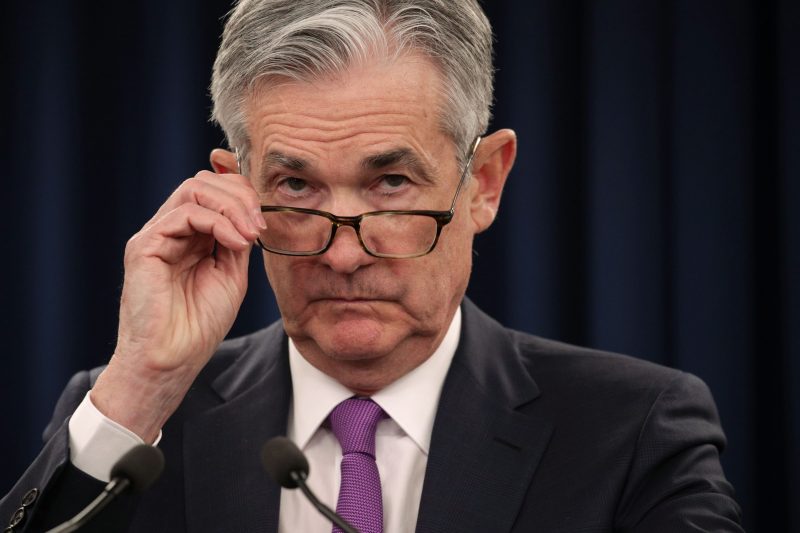Fed to hold fire despite White House call for rate cut
Fed Chairman Jerome Powell will announce central bank’s latest decision on May 1, 2019 (ALEX WONG)
Washington (AFP) – The Federal Reserve is poised to hold its fire this week, leaving benchmark US interest rates untouched as central bankers await firm indications of where the world’s largest economy is headed.
But as policymakers gather for their third meeting of the year on Tuesday, President Donald Trump is still hammering the Fed, demanding they lower interest rates. He also made plans to fill Fed vacancies with political loyalists to help get his way.
Top White House economic adviser Larry Kudlow said Friday the surprisingly strong growth in the first quarter of the year could “open the door to a target rate reduction in the months ahead” — though he hastened to add that he respected the Fed’s independence.
In addition, inflation “is coming in way below their own benchmark,” he told CNBC, referring to the central bank’s two percent target, while its most-watched measure has remained stubbornly slow, coming in at 1.3 percent in the first quarter of the year.
Fed Chairman Jerome Powell has steadfastly defended the central bank’s independence, and made it clear officials will base their decisions on economic data.
After four increases in the benchmark lending rate in 2018, the Fed has signaled clearly it would not raise rates this year. And given the strength of recent data reports, a rate cut could seem counterintuitive.
But some economists still think the next move will be a cut.
The minutes from last month’s policy meeting show members of the rate-setting Federal Open Market Committee believed their policy stance could “shift in either direction,” at least raising the possibility of a rate cut at some point.
Futures markets appear convinced the FOMC will feel compelled to lower rates at least once in the next nine months, and as of Friday odds were at 20 percent it will cut as soon as June.
In recent media interviews, Richard Clarida, the Fed’s vice chairman, and Charles Evans, president of the Chicago Federal Reserve Bank, acknowledged rate cuts could become necessary.
– ‘Hmm… I don’t know’ –
But with Wall Street hovering at record levels unemployment below four percent and job creation holding steady, economists say that for the moment the central bank is sticking with the pause announced in December.
Ian Shepherdson of Pantheon Macroeconomics said Friday the blockbuster first-quarter GDP could put rate hikes “back on the agenda” if it continues through the year.
But other economists said the 3.2 percent growth recorded in the January-March period hid worrisome signs of weakness, such as falling imports, weak consumption, rising inventories and poor business investment.
Diane Swonk, chief economist at Grant Thornton, told AFP the GDP estimate was “a lousy three percent” that masked warning signs in its details and came amid perpetually soft inflation.
In March, a closely watched measure of consumer inflation hit its slowest pace in 13 months. And the Fed’s preferred gauge, the “core” Personal Consumption Expenditures price index, has not exceeded the Fed’s two percent target in seven years.
“The reality is that once inflation started to recede, even though the economy’s stronger, something’s wrong,” Swonk said.
Though unemployment is low and wages have begun to rise, she said, price pressures simply have not responded, leaving the Fed with little impetus to push its target interest rate range any higher.
“They’d like to stay optimistic that their next move would be up but there are enough people sitting on the sidelines saying, ‘Hmm… I don’t know.’ That keeps the Fed firmly on the sidelines,” she said.
“Their cautious optimism is the way to play it right now.”
Disclaimer: Validity of the above story is for 7 Days from original date of publishing. Source: AFP.


